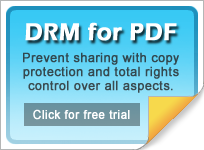
How Do You Secure Your Website Using The Best Hacker Protection Advice?
When it comes to preventing hacks of your web site there is no better defense than simple common sense.
 These days anyone can be a web designer with the help of a CMS like WordPress, Drupal, and Joomla. Moodle is a good one as an online learning system but it is very much more complex to use even after installed and running on your web site. Moodle is very sophisticated and caters for complex course level and grading scenarios. WordPress is more commonly used as it is free, easy to install and also available already installed with cheap web hosting plans.
These days anyone can be a web designer with the help of a CMS like WordPress, Drupal, and Joomla. Moodle is a good one as an online learning system but it is very much more complex to use even after installed and running on your web site. Moodle is very sophisticated and caters for complex course level and grading scenarios. WordPress is more commonly used as it is free, easy to install and also available already installed with cheap web hosting plans.
But CMS are targeted by hackers and especially WordPress because the chances of success are higher due it its popularity and the plethora of plugins available for it that may or may not be vetted for security by WordPress.
With so many inexperienced web designers too many sites are left open to exploit. The reasons for hacking a web site can be many, ranging from malicious damage by competitors to simply adding content to your web pages as link juice for SEO ranking of their own web sites. Either way the exploits use the same methods and they mostly start by looking for a weakness. In fact well organized hackers have banks of servers probing every web site on the planet looking for a weakness. They will start by pinging pages and scripts that if present may be exploitable such as upload functions to deliver their payload or database scripting routines that will allow them to adulterate existing date, steal data or add data that suits their purpose.
So write permissions on files and folders are most important. They should never be writable by the public and upload functions need to limit the file types that can be uploaded. Any pages facing the web that write to a database can give away form criteria to use so care is required to obfuscate that information as much as possible and also sanitize the data that is accepted to ensure that commands cannot be received that can alter, delete or otherwise exploit your data.
Anti-virus software makers promote their products for server use and there are also some server security solutions promoted to prevent intruders but neither is needed if the "common sense" described above is observed.
Additionally real website protection software of the type that prevents unauthorized access and limits what can be done and shown to a web browser can add an extra layer to that common sense. For example, by using the ArtistScope Site Protection System (ASPS) a secure tunnel is created between your web site and the user's web browser which passes encrypted data that only the ArtisBrowser can decipher. All other web browsers and applications can only ever receive an error message advising the use of ArtisBrowser. Consequently everything transmitted between web server and web browser is secure, even from packet sniffing software.
The added bonus of using ASPS is that all media and page content can be copy protected, and that users can be identified by unique computer ID, thus enabling you to restrict access to exactly who, when and how it that information and media can be displayed.
Without ASPS all content on your web site is exposed and downloadable by anybody.
Data mining and plagiarism can also be unwanted exploits of your web site, so real website protection software like ASPS can prevent that and information like technical data sheets, user-guides and other intellectual property commonly published in PDF form can be similarly protected by using
PDF security software. The best PDF security software for web page display is undoubtedly the CopySafe PDF Protection software which not only prevents display of the PDF file from anywhere else but your web site, but it also prevents direct unprotected access to the PDF file's contents by any means other than the CopySafe browser plugin which prevents all copy including PrintScreen and screen capture.
For an obligation free consultation for the security of your web site please use our
contact form.
Author: William Kent
Date: 20th May 2020
Return to DRM and Copy Protection
Comments
No comments





